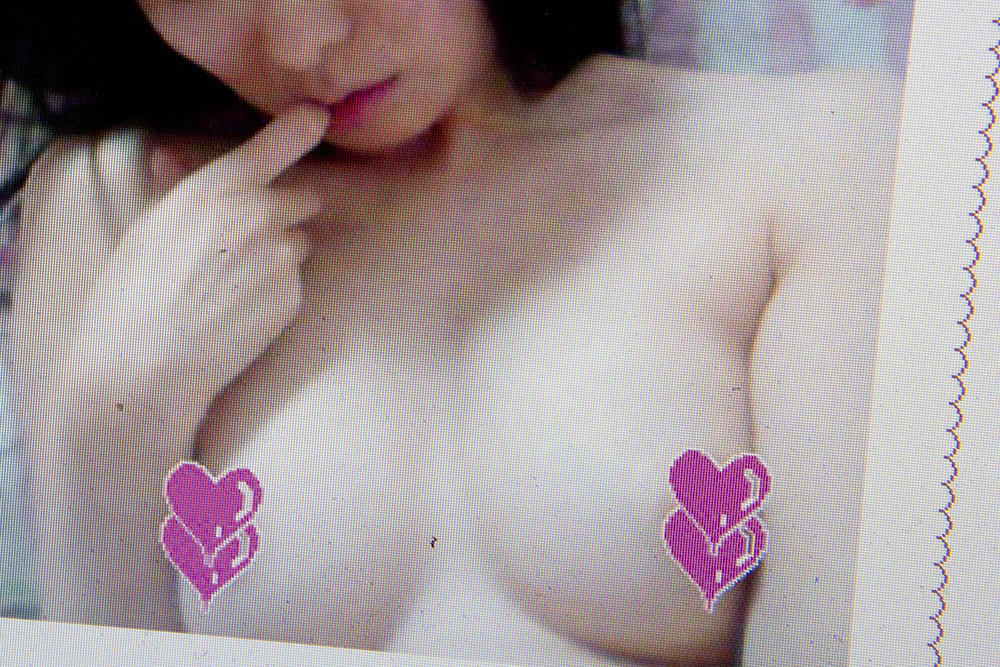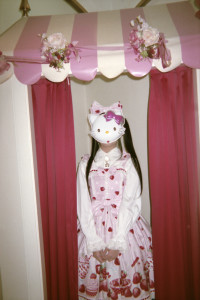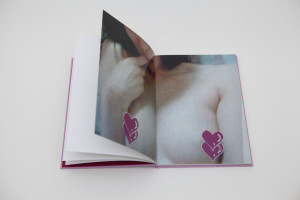Tamara Kametani & Yoshi Kametani
This week I spoke with Brooklyn-based artists Tamara Kametani and Yoshi Kametani about their new book, Sumimasen.
Liz Sales: Congratulations on your new book, Sumimasen. Could you tell me about it? I know that you and your subject, a webcam girl, collaborated with each other under the name IPG.
Tamara Kametani: We’ve been working collaboratively as the IPG Project since 2010; this was our third project. We were in Tokyo at the time and were interested in exploring the ideas of privacy and identity when we met Mayura, a pornographic actress and webcam girl. She has four cameras inside of her apartment that film her 24/7; this footage is streamed to a website where people can watch her going about her day inside the apartment. Her ideas of privacy and identity are, therefore, very different from ours; therefore, we thought it would be interesting to work with her on these topics. She was intrigued by the idea, and that’s how the collaboration came about.
LS: How did you discover her?
Yoshi Kametani: We met Mayura through a friend we know online. Because of social media, we meet so many people now; the world has become a smaller place. When we were in Tokyo, we met up with this friend; while we were telling him about our ideas, he offered to put us in touch with one of the people he photographed once, who happened to be Mayura.
LS: So did you decide to conceal her identity, or does she do that generally?
YK: We decided to use a mask.
TK: The decision to use a mask with Mayura was by no means an effort to conceal her identity or protect her. Mayura is a very public person, so she never had an issue with being part of the project or revealing her face. There is a misleading quality to a human face; that is, when you see somebody’s face, you automatically feel like you know the person. We believe our face does not represent who we really are; rather, our actions do. There are terms (“honne” and “tatamae”) in the Japanese language that mean ‘true feeling’ and ‘public behavior’ and could also translate to the act of putting a mask on and taking it off.
YK: That also circles back to the name of the book, which is Sumimasen. The word has multiple meanings, such as ‘excuse me’ and ‘sorry,’ but it is also used to express gratitude; it can be used as a way of saying “thank you.” It is only used in public interactions, though, and it is not commonly used within intimate relationships. The word in itself anchors this public code of behavior.
LS: How did you choose the mask? Or did Mayura choose it?
YK: We gave Mayura a selection of around 10 different masks. She chose Charmmy; which, as we found out, is Hello Kitty’s pet cat. When we first walked into her apartment, we realized why she chose it: the apartment’s décor featured a lot of items with Charmmy on it, like the curtains, the shower curtain and a few other things. That character—Charmmy—was already part of Mayura’s identity at the time.
LS: In your book, the matte pages are your pictures and the glossy pages are screen grabs from Mayura’s webcam feed, right?
YK: Yes; the glossy pages feature images from her blog, her videos and the magazines she’s featured in. We wanted to recreate the screen feeling and, together with our publisher, we came up with the idea of using UV varnish to simulate the experience of looking at a screen.
LS: What level of input did Mayura have into your final edit?
TK: She wasn’t exactly involved in the editing or the layout. We showed her the first edit while the work was still in its editing stages and, after the book was published, we sent her a copy; she liked it.
LS: What are you guys working on now?
TK: We’re working together on a series of handmade artist books. The series is called DASH.
LS: You do independent projects too?
YK: Yes. We have a collaborative practice and separate ones.
LS: Are you an actual couple?
TK: Yes, it makes it easier.
LS: Is there a separation between your working relationship and your actual relationship?
TK: I don’t think there is. I don’t want to say that we live through our work, because that sounds kind of terrible, but it’s kind of like that. We really enjoy what we do and made the choice to live the way we live, so I think working together is just a natural progression.
LS: Did your working relationship evolve organically, or did you make…
YK: It pretty much evolved organically. The steps we take, no matter what it is, to make decisions are the same. Whether it’s “What do you want to eat for breakfast?” or “How do you want to edit this book?” it’s the same process—a discussion. I think we discuss every single decision we make.
LS: That’s kind of wonderful.
TK: It is wonderful and we enjoy working together; but we feel it is important to have our separate practice as well.
YK: Yes, because if you do work together all the time and spend a lot of time together, it’s difficult to bring something new to the table. But, if we both go out into the world, learn new things, create new things and get inspired by new things separately, when we do come back together we’ll have something new to share with each other.
LS: There’s sort of…there’s kind of a self-reflective quality to this book, in that you’re making a photographic project with someone who lives on camera. Technology has changed our relationship with photography, and that change is part of what I see you tapping into.
YK: With Mayura, the fact that she chooses to be in front of the camera 24/7, the fact that she is revealing almost…well, every physical aspect of herself, was definitely the main reason we wanted to collaborate with her. Technology and photography has a very direct influence on her life. We never really thought about this body of work being about photography and its relationship to technology, but since photography is so present in almost everyone’s life now, it could be about that as well.
LS: Fair enough. What do you hope people take away from the book?
TK: We aren’t really trying to make any statements here; rather, we’re posing questions. And those questions are what we would like the viewers to walk away with.







